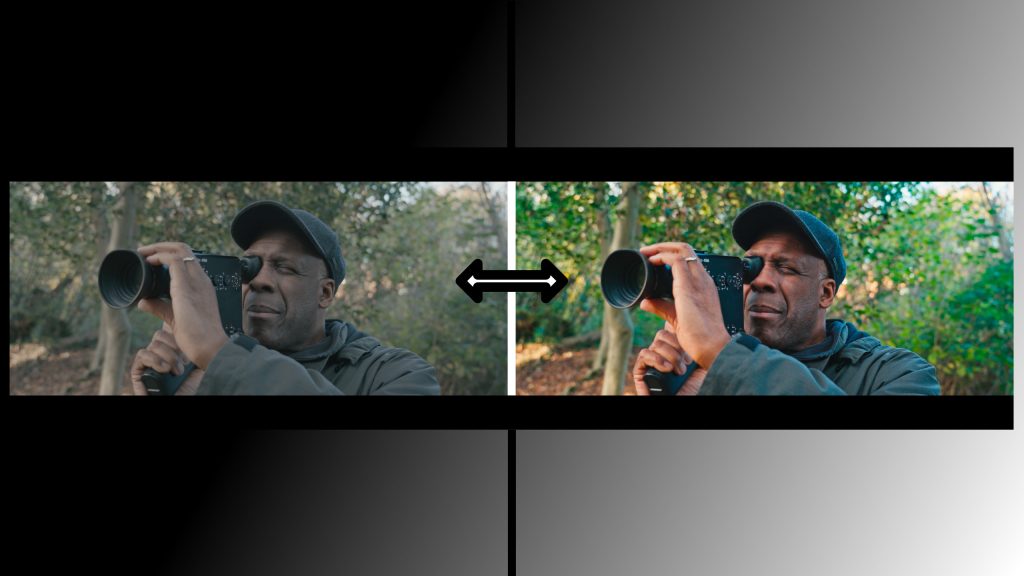
LUT there be Light
by Charles Amponsah
LOOK-UP-TABLES, or LUTs, can be a life-saver when you’re trying to navigate the often unfamiliar world of in-camera LOG footage at the production stage or colour grading in post. The whole point of shooting logarithmically is to get as much dynamic range out of a camera’s sensor as possible. Sony already provides in-camera Gamma Display Assist for S-Log2, S-Log3, HLG (BT.2020) and HLG (709),so that shooting LOG gives everyone on set an idea of what the finished product might look like although, the levels of contrast and saturation are not always to everyone’s taste.
LUTs – their real worth
LUTs face it (I couldn’t resist that one), it is really difficult to gauge focus properly on set when an image does not have much of its colour or contrast. Judging the intended colour temperature of lighting, particularly on skin tones, is also difficult without a LUT but perhaps the most challenging time comes when a client, an agency or a director wants to really see what is going on and keeps asking why the image doesn’t quite look right.
Sony’s new FREE Lo Con Base LUTs
For the VENICE 2, Josh Pines and Chris Kutcka, Color Scientists with credits to their name that include Saving Private Ryan, The Revenant and Pirates of the Caribbean, created the Lo Con Base LUT – and quite a few variants – with Colorist Jason Fabbro. Josh Pines told the Sony Cine website: “The Sony Lo Con Base LUT is a low contrast starting point that has the S-curve built into it. It is designed to be modified.” There are three basic LUTs and two Looks. Most cinematographers (whose cameras or monitors accept loadable LUTs), Digital Imaging Technicians and colourists, will probably be satisfied with this LUT pack.
In our arsenal of viewing transforms and LUTs, in our post-production process, we use a variety of transforms, ranging from those supplied by Sony (for in-camera assist work), tables from Alister Chapman and Joel Famularo when using a monitor, and those built in to DaVinci Resolve for post production work.
Do Sony’s Lo Con Base LUTs work with other Sony cameras?
The work of Josh Pines, Chris Kutcka and others at the high end of film/cinema/video colour, makes a compelling argument for using these new Low Con Base LUTs and other newly-developed derivative viewing transforms.
Speaking to Sony Cine, Josh Pines says of Lo Con: “It has knowledge of the camera encoding, the camera color space and it drives it towards something that’s not very high contrast. It doesn’t severely limit the color gamut. It’s like a block of clay that gives colorists or other people who like playing around with images, a starting point; they’re not starting from complete scratch.”
Great! Does it work with other Sony cameras? A big clue lies with a sentence from Sony: “The Sony Low Contrast Base LUT is based on the S-Gamut3.Cine color space and underlying S-Log3 curve to successfully map those color spaces for any display.”
Presumably then, one only has to start with the same S-Gamut3.Cine colour space and S-Log3 curve in production to be able to fairly accurately judge your intended look. It is likely then that the new Lo Con Base LUTs WILL work with other cameras besides the VENICE 2, given that everything from Sony’s FX-30 to its FX-9 all use roughly the same colour science as VENICE.
LUTs look to the Future
Perhaps Sony might be tempted to go down the road that ARRI has taken, in releasing its own LUT generator. You can go on to ARRI’s website and literally create your own Look Up Table for ARRI Log C. By using radio buttons to say which source and destination formats you’d like to use, adding a conversion parameter (say, ARRI 709) and a LUT format, you can generate your very own 3-D LUT. ARRI also has a set of downloadable LUTs for its VENICE 2 rival, the Alexa 35.
The wider choice of which LUT we choose to use can only benefit everyone in the production chain. The sheer number of Picture Shop LUTs and looks that Sony is promoting means that directors, directors of photography and colourists will have even more creative scope to craft a new era of distinctive productions, as home viewing technology moves to catch up with content creators’ creative intent.